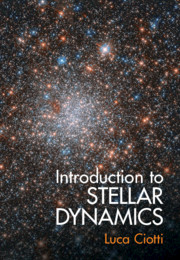Book contents
- Frontmatter
- Contents
- Preface
- Part I Potential Theory
- Part II Systems of Particles
- Part III Collisionless Systems
- 9 The Collisionless Boltzmann Equation and the Jeans Theorem
- 10 The Jeans Equations and the Tensor Virial Theorem
- 11 Projected Dynamics
- 12 Modeling Techniques 1: Phase-Space Approach
- 13 Modeling Techniques 2: Moments Approach
- 14 Modeling Techniques 3: From ρ to f
- Appendix Mathematical Background
- References
- Index
13 - Modeling Techniques 2: Moments Approach
from Part III - Collisionless Systems
Published online by Cambridge University Press: 28 May 2021
- Frontmatter
- Contents
- Preface
- Part I Potential Theory
- Part II Systems of Particles
- Part III Collisionless Systems
- 9 The Collisionless Boltzmann Equation and the Jeans Theorem
- 10 The Jeans Equations and the Tensor Virial Theorem
- 11 Projected Dynamics
- 12 Modeling Techniques 1: Phase-Space Approach
- 13 Modeling Techniques 2: Moments Approach
- 14 Modeling Techniques 3: From ρ to f
- Appendix Mathematical Background
- References
- Index
Summary
In this chapter, we discuss the complementary approach to that presented in Chapter 12 for the construction of stationary, multicomponent collisionless stellar systems. The Abel inversion theorem is introduced, and then a selection of density–potential pairs of spherical, axisymmetric, and triaxial shapes commonly used in modeling/observational works are presented. We finally discuss the solution of the Jeans equations for spherical and axisymmetric systems, and among other things we show how to compute the various quantities entering the virial theorem. For illustrative purposes, we use some of the derived results to investigate the possible physical interpretations of the fundamental plane of elliptical galaxies.
- Type
- Chapter
- Information
- Introduction to Stellar Dynamics , pp. 236 - 280Publisher: Cambridge University PressPrint publication year: 2021

